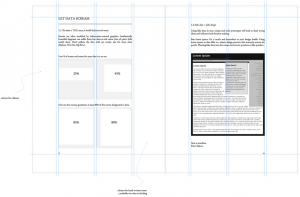By Aytekin Tank
Growing up in Turkey, I had a summer job at a bustling restaurant in Ankara. One year, the manager almost worked us to the bone. Our schedules were brutal and inflexible, the manager never hired extra hands when we needed them, and the entire staff was burned out and miserable. The next summer, a new manager arrived and she introduced a completely new leadership style. When things got chaotic, she checked in to see how we were doing. She hired extra staff for big events and let us switch shifts if we were exhausted. The restaurant was just as busy that summer. The only difference was how we felt at the end of it—not completely run down.
Now that I’m the leader of my own company, Jotform, the lessons of that summer job resonate more than ever. Namely, high stress isn’t a requisite for team success. There’s a better route, where you can achieve the same results, but not at the expense of your team’s sanity.
If you’re an entrepreneur, then you understand the delicate balance between crushing it and being crushed. Here are some questions to keep in mind to effectively manage your team’s workload.
Can we automate any tasks?
When people ask me whether I would change anything in my 18-plus year entrepreneurial journey, I often say that I would have embraced an automation-first mindset a lot sooner. By that, I mean utilizing the latest tools and systems to automatically handle mundane, manual tasks that waste time—such as invoicing, note taking, and data entry—and freeing yourself to focus on the work that only you can do; the kind of work that can propel you forward on your career or business path.
I believe automation isn’t a privilege for the C-suite. Leaders should encourage employees at all levels to take stock of their daily tasks—map out the steps in each and every workflow—and search for automation opportunities. I’ve seen this approach improve the mental health of workers at my own organization—and I’m not alone.
For instance, author and Wharton professor Adam Grant wrote about the Cleveland Clinic, and how updating the way they managed health records allowed doctors and care providers to spend more time with patients and less time inputting information. In this case, automation didn’t destroy jobs, rather, it empowered people to focus on the more meaningful aspects of their jobs.
Can we tap other departments for their expertise?
When Dinesh Paliwal took over as CEO of Harman International Industries, he instituted immediate changes to transform the global audio company. One of those changes was breaking down intra-organizational silos. He explained, “I started writing letters to every employee, every week: a company-wide letter to bring them up to speed on what we were doing.”
In my company, I’ve tried to likewise eliminate silos. We do this by working in cross-functional teams and hosting regular demo days—all-hands meetings where employees across departments share their latest ideas and offer feedback.
One of the greatest benefits I’ve seen to eliminating silos is that employees feel more comfortable tapping colleagues from various departments for their expertise. Why should a content creator struggle to organize an email campaign when a marketing specialist who’s done it a thousand times can swoop in with an easily replicable template?
If as leaders, we dedicate valuable time to hiring great people, we should encourage employees to take advantage of that talent pool. This can effectively reduce workloads and unnecessary time expenditures. And I try to lead by example—if someone can better execute a task than I can, I will not hesitate to delegate. I might even learn a thing or two.
Are we monitoring timelines to ensure work-life balance?
Having worked for other people’s companies before starting my own business, I can attest that one of the most demoralizing feelings for an employee is feeling like an interchangeable cog in a machine. Feeling like your employer only sees you as an asset on a balance sheet that they want to squeeze as much output out of as possible will inevitably lead to burn out.
Viewing employees as three-dimensional, multi-faceted human beings is crucial for employee engagement, retention, and your bottom line. In fact, research shows that empathy and compassion on a leadership level significantly improve employee performance, engagement, and profitability. Simply put: Caring about your employees is good for business. A huge part of demonstrating that care is prioritizing their work-life balance.
Continually monitoring timelines can help to maintain a semblance of work-life balance on even the most stressful of projects. Again, that requires carefully mapping out the steps in each workflow, including who is responsible for which parts, and establishing a space for open communication as the project progresses. Today, there are even chatbots that you can integrate into project management platforms that will prompt status updates from team members and keep projects moving forward. That way, employees can report any concerns or snags and the rest of the team can help and adjust their schedules as needed. Ideally, nobody is scrambling to stay on track and everyone can pencil in downtime into their schedule.
For high-achieving teams, stress is inevitable. Some stress may even be a positive, propelling force. But past a certain point, anxiety can leave employees disengaged and burned out.
Without changing the absolute quantity of work, we can utilize tools and build systems to change the quality and accomplish tasks more efficiently. It comes down to performing project inventories and taking advantage of the available tools and resources (many of which are low-cost or free) to keep workloads in check and maintain a healthy balance of stress.
(7)









